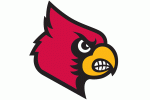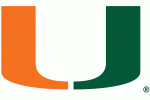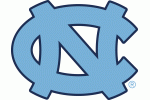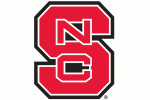Iowa’s season preview doesn’t need recycled lines about “iron curtain defense.” Instead, it zeroes in on how marginal gains, like a tweak in blitz timing or a backup’s readiness, shape odds.
/cdn.vox-cdn.com/uploads/chorus_image/image/63612663/usa_today_10391047.0.jpg)
Readers who follow this know that small edges matter. This sets up a dive into win-total implications and what subtle coaching or roster rotation shifts can mean for wagering.
Preseason Win Total Context
Iowa’s projected win total lands in a range reflecting steady performance under a long-tenured coach rather than expecting dramatic swings. The current odds play around the 7.5-win threshold, with over/under pricing roughly in the +120 to –150 vicinity, depending on the sportsbook. This framing shifts focus from fixating on exact figures to understanding the subtle factors that nudge the line each year.
Recent finishes carry more weight than flashy offseason headlines. A slight regression or modest improvement can tip whether Iowa clears that benchmark.
Oddsmakers blend historical baselines, such as frequent eight-win seasons, with perceived roster developments when setting the Iowa Hawkeyes odds. Analysts scrutinize quarterback changes, returning defensive veterans, and depth-chart nuances to gauge how close games might break.
Watching spring practice snaps and position battles reveals under-the-hood shifts, while scheme tweaks accumulate impact over a full season. Treating the win-total line as a narrative tool highlights where incremental adjustments may push results past conventional expectations, guiding bettors to focus on meaningful developments rather than memorizing precise odds.
Defensive and Offensive Profiles Impacting Odds
Statistical profiles exert a significant influence on odds. Iowa’s defense, historically stout, posts a middling yet respectable FPI rating of around 5.7, ranking near 20th nationally in preseason projections.
This situates the unit as capable but without the top-tier label. Analysts note front-seven experience and retention of key tacklers, which underwrites baseline expectations.
On offense, questions linger about scheme evolution and signal-caller proficiency. Reports highlight a new starter under center expected to unlock moderate gains after previous seasons’ conservative approach.
Advanced efficiency metrics also guide projections. SP+ or FEI models, while varied in methodology, point to incremental improvements if the offense clicks early. Defensive DVOA projections emphasize situational resilience, suggesting Iowa can limit explosive plays but may struggle to generate turnovers at elite rates.
These profiles feed directly into lines as oddsmakers calibrate margins for close contests in conference play. The interplay between unit strengths and opponent tendencies shapes win-total and futures odds.
Schedule Weight on Projections
The strength of the schedule tilts forecasts. The Hawkeyes’ slate includes matchups against perennial conference powers and must-win opportunities in more balanced contests.
Home contests against top-tier opponents often define margin-of-error scenarios. Recent analyses position Iowa’s conference road tests as pivotal, with games at elite programs representing tilt opportunities rather than toss-ups.
Non-conference scheduling can also tip the scales. A manageable opener can build early momentum, feeding confidence in analytics-driven models that prize hot starts. Conversely, a challenging neutral-site game risks early setbacks that skew public perception.
Big Ten alignment adds travel and recovery considerations, particularly late-season road trips. Variability in weather and venue environments often factors into conditional probabilities used by modelers. All these elements converge in odds-setting, as each contest’s projected point spread contributes to the aggregated win-total line.
Betting Market Trends and Analytics Insight
Understanding how market signals unfold helps frame more informed strategies. Rather than seeing lines as fixed, analysts recognize them as starting points shaped by sentiment and data. Below is a structured outline of key considerations, with varied lengths to keep the flow engaging:
- Reading Early Money vs. Sharp Action. Early bets leaning conservative often hint at doubts over offensive tweaks or defensive durability. Sharp action in the opposite direction signals confidence in improvements. Observers note these moves as the first clues of evolving sentiment long before consensus forms,
- Leveraging Matchup Intelligence. Deep-dive tools matter when lines wobble. It makes sense to Explore NCAAF Matchups on FanDuel to cross-reference market shifts with situational breakdowns. This step reflects how analysts tie head-to-head tendencies, like tempo, situational performance, and venue quirks, into a comprehensive view of value,
- Simulating Season Scenarios. Running multiple season simulations assigns probabilities to different win totals, translating into implied expectations embedded in lines. Comparing those probabilities against current market pricing exposes gaps. When simulated likelihoods diverge from public odds, that signals potential edge,
- Assessing Variance in Close Games. Many contests hinge on turnover margins, red-zone execution, or fourth-down calls. Understanding a team’s historic performance in these scenarios refines win-probability estimates. If market pricing downplays a squad’s situational edge (or overstates a weakness), that mismatch points toward informed wagering angles,
- Incorporating Coaching Tendencies. Late-game decisions often decide tight outcomes. A team known for cautious play-calling may limit blowout risk but sacrifice upside in high-scoring affairs. Spotting when lines misprice those tendencies, either undervaluing steadiness or overlooking upside constraints, can guide smarter bets.
Edge Found in Details
Surface narratives rarely move betting lines as much as hidden factors. The analysis nudges readers toward staying curious about evolving roles, scheme tweaks, and late-game behavior. It concedes that Iowa’s baseline stability gives context but insists that a genuine edge appears when one tracks subtle indicators. In that spirit, keeping an eye on those details can reshape expectations faster than headline developments.



















